
Project Summary
To receive newsletter updates of our research, educational events, and opportunities, please email growingroots@berkeley.edu with “subscribe” in the subject line!
This project combines research and outreach to foster innovative, sustainable urban farming methods to improve ecological resilience and meet urgent food needs. Lead investigators and community collaborators will help develop transformative solutions to improve the ecological sustainability of urban farming systems by building soil health, conserving water, and promoting beneficial insects. The project will also foster economic viability by improving distribution of urban-produced nutritious food to make it more accessible and affordable for urban populations and to minimize on-farm food waste. This project will benefit farmers, low-income consumers, and the educators, advocates and lawmakers who serve them. Research is taking place in the Bay Area, and lessons will be valuable for other urban communities throughout the state and country. This project is funded through the Foundation for Food and Agriculture Research.
Project Team: Jennifer Sowerwine (Environmental Science, Policy, and Management; UC Cooperative Extension), Tim Bowles (ESPM), Charisma Acey (City and Regional Planning), Rob Bennaton (UC Cooperative Extension), Paul Rogé (Merritt College & Agroecology Commons), MESA
Goals:
- Increase the ecological resilience, sustainability, and economic viability of urban/peri-urban farming systems.
- Improve metropolitan food distribution systems to reduce food waste on farms and meet fresh produce needs of low-income urban consumers.
- Help realign the East Bay food system toward achieving food justice.
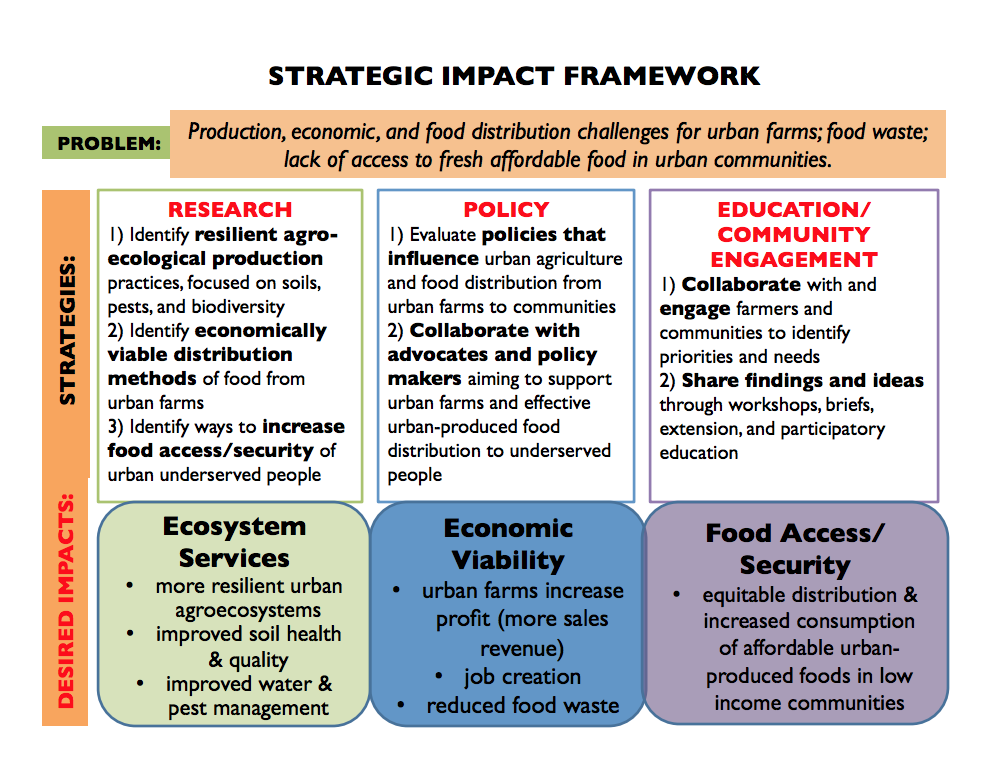
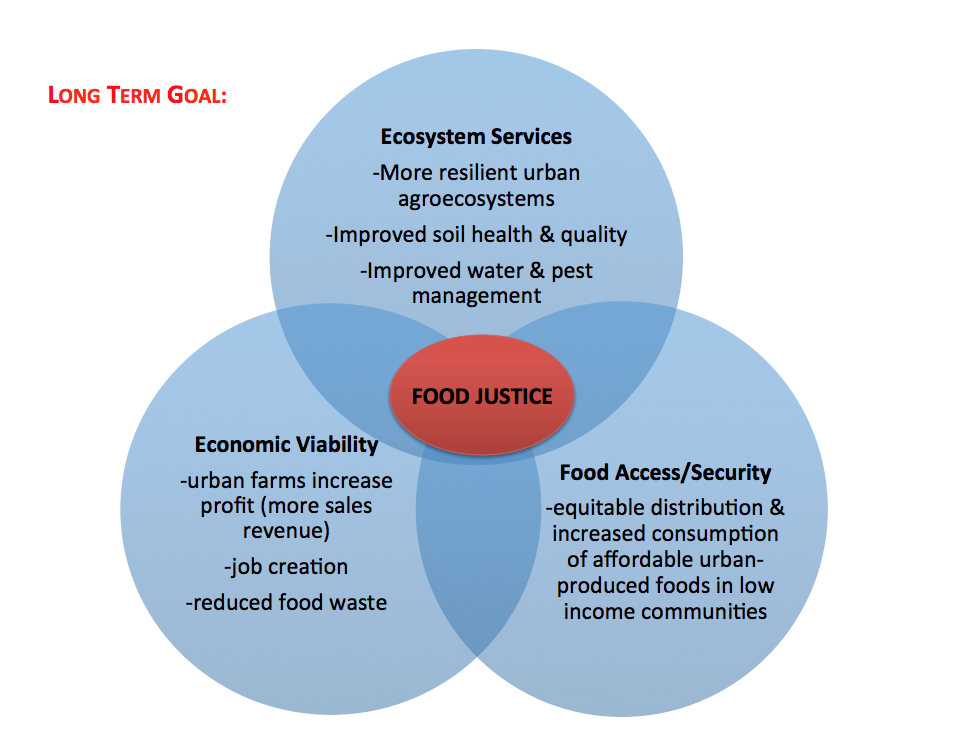
Main Objectives
- Evaluate existing urban/peri-urban food access and food distribution methods and assess their effectiveness in meeting food needs of urban low-income, food insecure communities;
- Evaluate urban agriculture policies nationwide to identify effective policies that support resilient urban farming systems;
- Conduct research on soil health and soil contamination to determine strategies for improving the quality, safety, water retention capacity, and productivity of urban soils;
- Evaluate how urban landscape composition harms or promotes beneficial insects and their habitats which play a critical role in urban pest control due to limited use of chemical control;
- Translate research results into policy briefs, extension, and educational materials and disseminate widely to decision makers, community advocates, and urban food producers and distributors.
Methods
We are using participatory research methods engaging students, farmers, urban farming apprentices, community members and stakeholder institutions to inform and conduct research and translate the results into effective educational tools, policy briefs and learning modules.
Project Teams
Food Access, Distribution, and Waste
The food access, distribution, and waste team seeks to understand:
- what are current barriers to accessing and distributing urban produced foods, and
- what strategies can overcome these barriers?
We began with a literature review of urban agriculture and food security research across the United States to inform our regional investigation and provide insights on promising practices or strategies for facilitating a socially just, equitable urban food ecosystem. For more, see “Digging for Answers: Do urban farms reduce food insecurity?” Next, we will collaborate with diverse stakeholder groups as research partners to bring the literature into dialogue with the realities of urban agriculture on the ground in our local East Bay community. Our investigation will involve multiple forms of data collection and analysis, including online farmer surveys, in person interviews and site visits, GIS mapping analysis, focus groups, and regular stakeholder input sessions in order to engage the community in working towards solutions together.
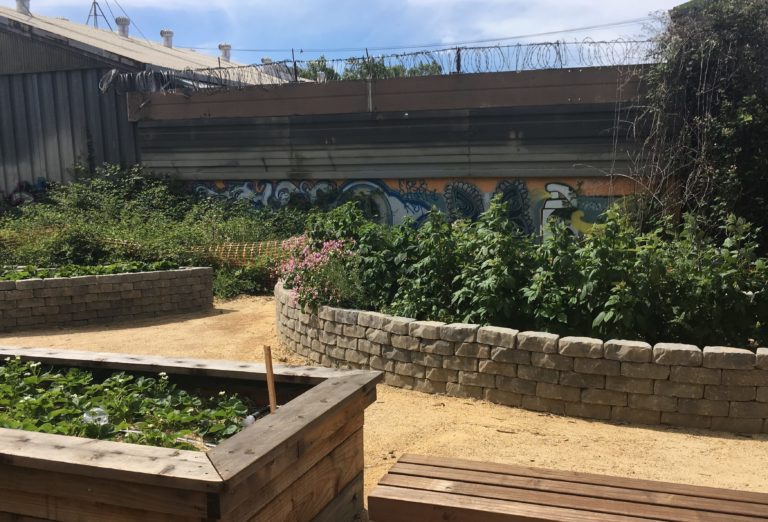
Timeline: Three years
Activities:
- Urban ag food access/distribution literature review
- Two stakeholder input convenings
- Urban farmer survey
- Follow up interviews
- Focus groups with diverse stakeholder groups
- Mapping analysis of urban farms, access/distribution channels, and community demographics
Expected tools/resources: Over the three-year research period, we plan to produce a set of tools and resources useful to our diverse stakeholder groups, including:
- Networks and communication channels for farmers to learn about and apply for grants to support their work, as well as a series of workshops on topics of identified interest based on the farmer survey (initiated July 2018).
- A summary of survey results to share back with farming participants and other project stakeholders.
- Mapping and informational resources on strategies to improve access/distribution from urban ag, identified from the survey, the literature, and stakeholders themselves.
- Urban agriculture-related recommendations for East Bay local city governments, as well as policy briefs geared to state level policymakers and legislators. These recommendations will highlight strategies for expanding access to urban produced foods, reducing food waste via food recovery from urban farms, opportunities for on-site composting on urban farms, supporting urban farmers seeking to access land, and policy frameworks for ensuring equitable access to the resources and benefits of urban agriculture (including prevention of displacement of local residents by siting of urban farms). We will collaborate with our stakeholders (e.g. SELC, FoodShift, Berkeley Food Network, StopWaste and others) in developing and sharing these policy recommendations.
Soil Health and Contamination
Soil Health
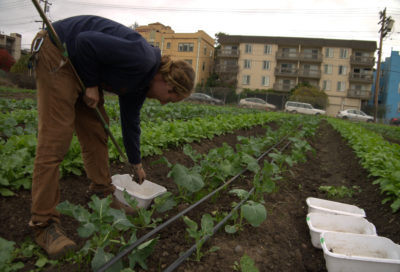
Urban soils used for food production may be degraded and require management to optimize productivity and resource use, including water. Our team’s project is evaluating a novel no-till method, based on intensive compost use on the soil surface developed at a pioneering local farm (Singing Frogs Farm, Sebastopol, CA), with till methods typically used by urban and peri-urban farmers. Experiential evidence indicates this method has the potential to dramatically increase soil organic matter and crop water use efficiency, but it has not been adapted for urban soils.
In conjunction with this no-till approach, we are testing how using forage radish as a cover crop might improve water availability, potentially by reducing subsoil compaction (leading to increased crop rooting depth and deep water extraction) and by improving infiltration of rainfall over the winter, increasing soil water storage.
Based on this experiment, we expect to provide new information on changes in soil health, crop yields, labor requirements, and input costs (e.g. compost, cover crop seeds, and water) of these different urban farming systems, allowing for an evaluation of the costs and benefits of these production methods.
The research plot is managed by an agroecology trainee in partnership with the Multinational Exchange for Sustainable Agriculture (MESA). Crops grown include a polyculture of culturally relevant legumes, leafy greens, and other nutritious vegetables. All food grown from the research plot (over 1,000 lbs to date) is donated to local food banks, including the UC Berkeley Basic Needs program.
Timeline: Two years (Oct 2017 to Sept 2019)
Activities:
- Testing of no-till and cover crop methods over two years at Oxford Tract plots
- Workshop at the Oxford Tract to share the farming methods with urban and peri-urban farmers (Year 2)
Expected tools & resources:
- Fact sheet summarizing results
- Video on practical aspects of managing the no-till and cover crop system
Soil Contamination
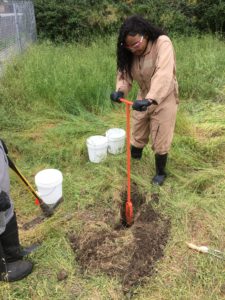
Many urban farmers do not have their soil tested for contaminants, mainly because those tests are expensive. When soils are tested, results are often difficult to understand. Using a grid-based sampling methodology, we will collect samples on urban farms through a participatory approach, enabling urban farmers to gain the skills and knowledge needed to replicate research methods. We will analyze the samples and develop strategies for best practices for safe and healthy food production in moderately contaminated soils to share with stakeholders.
Timeline: Two years
Activities:
- Provide soil testing support to partner Urban Tilth at new North Richmond urban farm site, make recommendations based on contamination, and retest.
- Run soil testing project with partner Berkeley Community Gardening Collaborative: design sampling plan and community survey, conduct sampling, and make recommendations. To include mentee training (environmental justice, food sovereignty, soil chemical analysis, survey design, sample collection) for five high school students and undergraduates.
- Workshop series for 30 MESA farmer trainees: (1) soil fertility and soil sampling techniques; (2) soil contamination and results interpretation using samples from trainees’ own farming plots.
Expected tools and resources:
- Instructional sheet on soil fertility and soil sampling techniques.
- Fact sheet on contamination mitigation best practices for urban farms.
- Video on practical aspects of managing the no-till and cover crop system.
Beneficial Insects
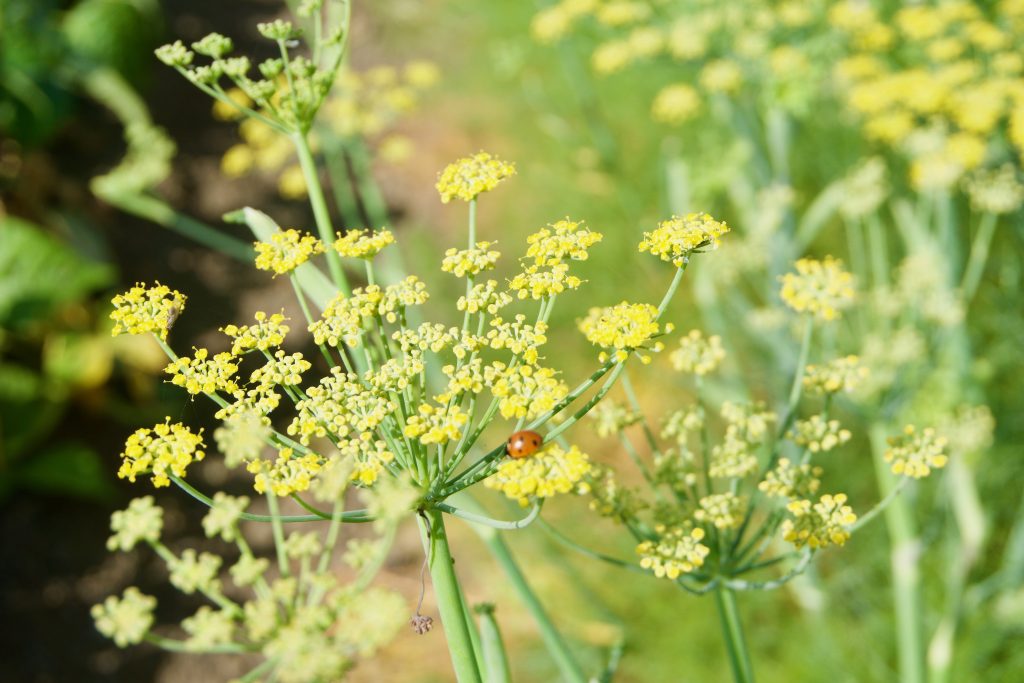
Urban farms often forgo the use of pesticides for environmental and health reasons, and rely on time-consuming, labor-intensive physical practices for pest management. Beneficial insects are primary drivers of pest control in urban farms and gardens. Because on- and off-farm landscapes could provide valuable habitat for beneficial insects, additional research is needed to investigate landscape effects and identify critical habitat. Findings from this research could drastically affect the way researchers understand the movement of beneficial insects in urban landscapes, as well as reduce crop loss and labor-time for resource-constrained urban farmers.
Our recent literature review designed for urban agriculture practitioners shows that local and landscape factors differentially affect insects across studies, and identifies several on-farm practices that can be implemented to increase biological control in urban agriculture.
Timeline: Two years
Activities:
- Survey potential urban agriculture research sites, assess interest in participation by farm managers, identify six urban agriculture organizations for research, and develop sampling plan
- Conduct site visits for sampling and mapping.
- Set up lab and greenhouse spaces for rearing plant samples (Brassica) in light chambers and for planting in test plots.
- Conduct sampling in two phases: Early season and late season (on- and off-farm vacuum, on- and off-farm plant ID, on-farm crop damage assessments, on-plant insect counts).
- Conduct exclusion and non-exclusion treatments where feasible.
- Train student apprentices; mentor as they identify and catalog insects.
- Analyze data and prepare reports.
- Share findings with farm managers and other community stakeholders at two workshops on conservation biocontrol/Integrated Pest Management (IPM) in urban agroecological settings.
Expected tools and resources:
- Fact sheet on urban biocontrol/IPM
- Educational video on urban biocontrol /IPM
Selected Publications
Producing urban agroecology in the East Bay: from soil health to community empowerment
Local and Landscape Effects to Biological Controls in Urban Agriculture—A Review
